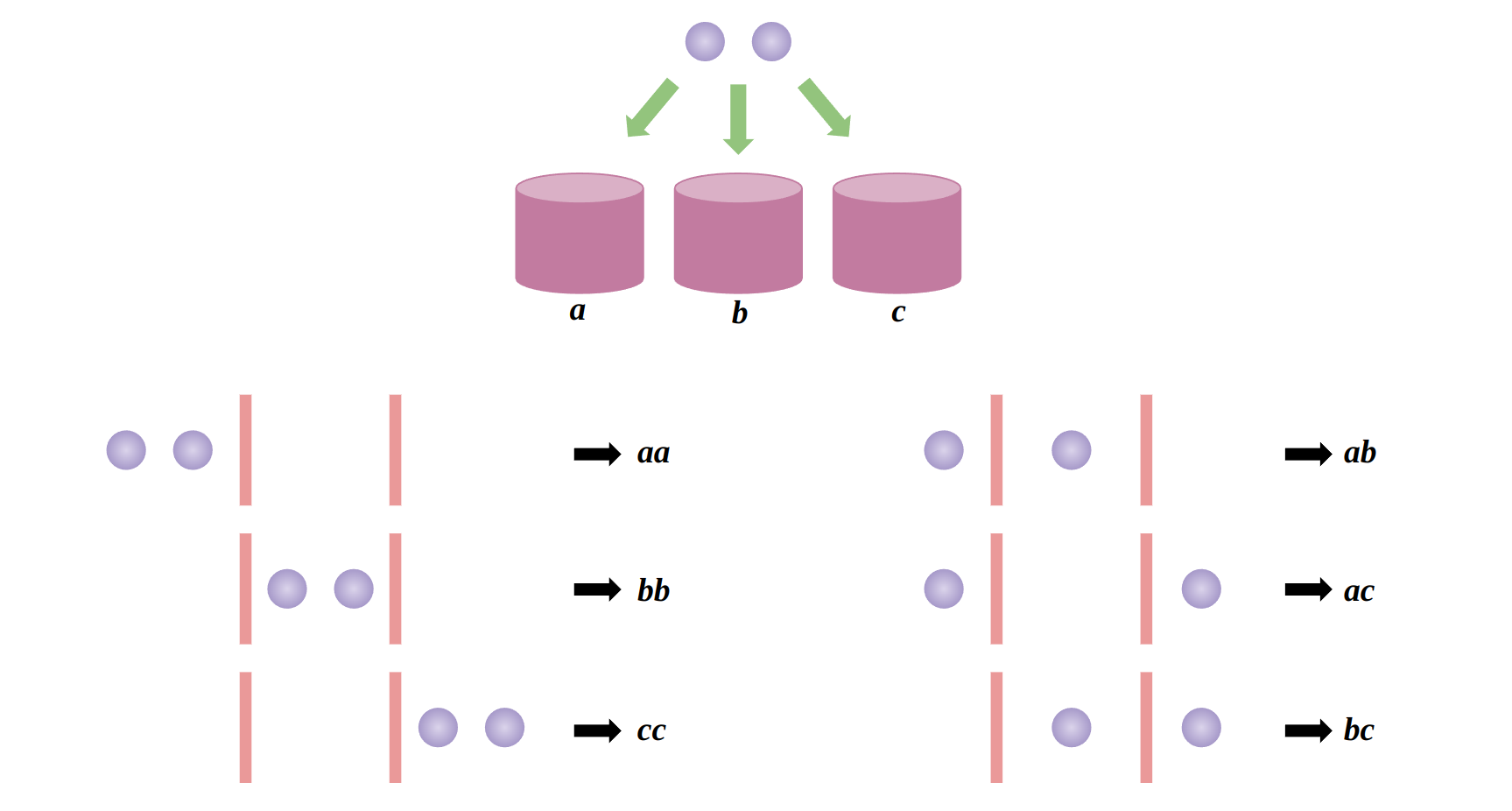Definition
A r-combination with repetitions, or r-multicombination from a set S of size n is defined by ((rn))=(rn+r−1)
Since it is a combination, the order of arrangement of the members in S does not matter. However, the difference is that it allows for duplicates.
Derivation
First, consider selecting 2 elements from S={1,2,3}. All possible cases of the repeated combination are as follows. {1,1},{1,2},{1,3},{2,2},{2,3},{3,3}
If 0 and 1 are added to the first and second elements of each of them, {1,2},{1,3},{1,4},{2,3},{2,4},{3,4}
It is a combination of n things taken r at a time without repetition. Furthermore, since the case (1) and (2) are one-to-one correspondence, ((23))=(24)=6. Generally speaking, ((rn)) can be analyzed as follows. ((rn)){1,1,1,⋯,1}{1,1,1,⋯,2}⋮{2,2,2,⋯,2}⋮{n,n,n,⋯,n}⟹ adding {0,1,⋯,r−1}⟹(rn+r−1){1,2,3,⋯,r}{1,2,3,⋯,r+1}⋮{2,3,4,⋯,r+1}⋮{n,n+1,n+2,⋯,n+r−1}
Therefore, the repeated combination selecting r elements from distinct n elements is equal to the combination selecting r elements from distinct (n+r−1) elements.
Another Point of View
Consider the number of cases selecting 2 among 3 characters, a, b, and c allowing duplicates. This can be thought of as when putting 2 balls of the same color into 3 baskets, the characters correspond to the number of balls in each basket.

As shown above, this is also the same as the number of cases arranging 2 balls and 2 separating bars. Generally speaking, ((rn)) is the number of cases arranging r balls and (n−1) separating bars. ((rn))=(n−1)!r!(n+r−1)!=(rn+r−1)

